A while back, I started a little series here called Urtext Myths (part I here, part II here). While preparing for my recent performance of Mahler’s 5th Symphony at the Harlech Orchestral Summer School, I came across something in the Preface that got me thinking about a new article in the “myths” series. This is possibly the biggest myth of them all-
“An Urtext edition meticulously reproduces exactly what the composer wrote, free of editorial interpretations or interpolations.”
What? I hear you say…. Isn’t that pretty much the definition of an Urtext- a clear and mistake free rendering of the text of the work as the composer wrote it, not as some performer or scholar though he or she should have written it?
I hate to burst anyone’s bubble, but we don’t live in that world. Almost any good editor will tell you so.
When I started preparations for my previous performance of Mahler 5 with the Oregon East Symphony in the spring of 2009, I struggled for some time over whether it was really necessary for me to invest in the new Critical Edition of the score. After all, I already had 3 scores (the Dover reprint of Mahler’s original version, the Philharmonia pocket score of the first version of the Critical edition by Ratz and the 1988 correction of the Critical Edition by Fussl). Especially given that we were going to be playing from Kalmus parts (which are a reprint of an early version of the symphony and don’t contain many of his later changes and corrections) as a matter of budget necessity (it came down to Kalmus or losing 2 stands of strings to pay the high rental costs for the Critical), I wondered if that was the moment to invest over $100 in a study score of Rheinhold Kubik’s new Critical Edition.
In the end, I’m glad I did! The new edition provides a lot more depth of content and context, corrects many errors and gets one a little closer to seeing the piece through Mahler’s eyes at the end of his life. Worth every penny!
However, when I was preparing the work this time, I was reminded of this line from the Preface-
“A further alteration concerns the clarinet parts. Mahler had the 3rd clarinet play the D or E-flat clarinets. Today, however, it is general practice that the high clarinets are played by the second player, and the low clarinet (bass clarinet) is played by the third player. The edition makes allowance for this fact and divides the clarinets accordingly in score and parts. The clarinet in C is today hardly used any more; therefore the passage at the beginning of the second movement (up to b. 30) has been transposed to B-flat in the parts.”
Kubik is dealing with two separate issues here- first, one of doubling assignments. Mahler’s assignments of doubled parts are often rather baffling to modern players. As a result, it’s not unusual for librarians to do a bit of photocopying so that, for instance, the same player is playing English Horn throughout a work, rather passing those duties on to a colleague in a movement with more players. In this sense, Kubik is basically making permanent a common performance practice- no great sin, but it is certainly not simply presenting the text as the composer wrote it. Practical? Yes. Critical? Not convinced.
The second question involves the transposition of the C clarinet parts into Bb. First, I think this is un-necessary. Any clarinettist good enough to play Mahler 5 can transpose. More seriously, it calls into question whether we should alter the text to conform with performance practices of the modern day. (Update – the new Breitkopf Critical edition of Mahler’s Blumine publishes clarinet parts in both the original C and in B-flat, while the score remains as Mahler wrote it, with the clarinets in C).
Granted, the SCORE still has those parts written for C clarinet, so the conductor is still aware of Mahler’s original intentions, but the player isn’t (unless the parts present the passage in both C and B flat, which might have been handy- not having seen the parts, I can’t be sure from his description). Even if a player is going to perform the part on a Bb clarinet, might they not keep in mind the thinner and brighter sound of the C clarinet that Mahler originally asked for if they know that was his intention?
Also, more and more clarinet players have good C clarinets. They make a great noise, and Mahler loved them and used them often. Now, if a conductor insists on C Clarinets (not unreasonable in a major orchestra or a period band), the player has to re-transpose the part back, or use the Kalmus parts, which seems perverse.
There is a parallel situation in his trumpet writing- he loved the F trumpet, and it seemed to have a specific character in his mind. Should we change the scores to being all for C trumpet in America and B-flat trumpet in the UK simply because the majority of players use exclusively those instruments instead of switching between F and Bb instruments as Mahler often asks? Again- a player may stay on the same instrument but be mindful of a change in sound or character the composer had in mind, but only if he or she knows that change was there. (I should be clear- Kubik has not changed the trumpet parts)
Another piece with C clarinets is Beethoven’s Fifth Symphony. Beethoven, like Mahler, tends to get editors and performers quite fired up, and there are always lots of disagreements, some heated over various readings in various critical editions. Fair enough- controversy sells sheet music! But, the many differences between the Barenreiter and Breitkopf Urtext editions (made at more or less the same time) are, if anything, proof positive that assembling an Urtext edition is not a science.
As a case in point, look at the last bar of the piece. In the old edition, the timpani notation was a little unusual- a tremolo for one half note, then a trill for the 2nd.
(My old score of Beethoven 5- in my parts it is marked > then sf, rather than 2x >. I have done it just as a roll, too)
In spite of this, in my youth, I never heard a performance that rendered this as anything other than long, loud roll until I heard the Cleveland Orchestra and Dohnanyi do it on tour. When the timpanist re-articulated the C on the 2nd half of the last bar and intensified the sound, the effect was electric. I went to library and got the score (before I owned it- that was a different age!) and, sure enough, that was what was written.
(Dohnanyi and Cleveland with the fancy timp ending)
When I got the score for Jonathan Del Mar’s new edition, however, I was a little bummed to see that the timpani in the final bar only read as a whole note trill-
However, in Clive Brown’s new edition for Breitkopf, it reads as it always has-
In both cases, the authors deal with the bar in the Critical notes. Clive Brown notes-
“Mvt IV, bar 444- Timp SPH semibreve (whole note) with tr, A ES, EP as in present edition”
SPH refers to the earliest hand copied manuscript set of parts, while A is Beethoven’s autograph, ES is the first printed edition of the parts and EP is the first edition of the score
Del Mar has more to say in his Critical Notes.
Pk notation in B, P, E, BR releasing a storm of controversy among percussion players who either concoct or, on the contrary deried, different (often fanciful [emphasis added]) interpretations of what Beethoven could conceiveably have meant. See for example Norman Del Mar 1992:102… On one level, A appears to confirm precisely the reading in these later sources (see facsimile on p 19). On the other hand and entirely different, and manifestly more plausible solution is suggested by all the deletions in A as follows…..
(Facsimle of LvB’s autograph with the offending note circled by the author)
Del Mar then goes on to outline how a series of changes to and deletions from the timpani part mean that the first half note with the tremolo slashes above it is actually deleted (ie- the slash marks indicate it has been delete.
Continuing, he writes
“He converted the quarter note into whole note with tr, simply assuming the new version to suerpsede all of the quarter, even though the stem was not, in fact, crossed out. (There are, of course, plenty of examples in A of portions of earlier versions being only partly, or not all, deleted). And in fact it is this simple whole note tr that is found in the manuscript parts, suggesting that Klumpar (the copyist) may have consulted Beethoven…We then have to accept that (a) Klumpar forgot Beethoven’s advice when he came to copy B- again, as on other occasions- and (b) Beethoven overlooked the error while correcting B (copyists score). Similarly, this is wholly plausible; he overlooked much more serious errors than this… Our text, therefore from PX”
Now, I’m not qualified to say that Del Mar is wrong, but if you think that an Urtext edition is a nicely printed version of what the composer wrote, as opposed to one man’s opinion of what he thinks the composer meant, this is close to a perfect example of what can go wrong. Even though the autograph and all sources other than the manuscript parts agree with the “old” reading of two half notes with different roll notations (Del Mar is correct that Beethoven’s notation for a roll is tr, not slash marks), such a reading is “fanciful” and, even though A appears to confirm that reading precisely, a “manifestly more plausible solution” is that Beethoven didn’t write what we see on the page. What we see on the page is a caliographic accident resulting from a number of changes and deletions. The proof of this is that Beethoven may have told his copyist of the change when the handwritten parts were written at great haste, but later overlooked the point in the manuscript score and the first edition. In other words, it is “wholly plausible” that Beethoven took more care with the rendering of this note in the handwritten timpani part used for the first performance than in the engraved edition.
I find that a bit of a stretch, but Del Mar could absolutely be correct. Where there is doubt, there is doubt, and opinion, however well grounded in scholarship, is no substitute for evidence.
Assuming Del Mar is correct, I think the more honest thing to do would be, ideally, to put both versions in the score and parts with a footnote calling attention to his analysis in the Critical Notes. Failing that, since the “old” reading is in the Autograph and all but one of the sources, I think the correct thing to do is to put that old reading in the materials with a note that the editor thinks it is wrong so that the performer can read why. *
My current ideal Urtext edition is the Barenreiter box set of the Bach Cello Suites. Included in the box are facsimiles of all the existing sources from Bach’s era (his manuscript is lost) and a nicely engraved printed score. In the printed score, where ever there is a variation in the sources, the editors put in all the existing readings, EVEN ONES WITH CLEARLY WRONG NOTES. In other words, any time there is a discrepancy, even one we can be sure of the correct reading to 99.99999% certainty, they put the cards on the table so the performer can clearly compare the variations in the sources.
Brown does this sort of thing occasionally in his Beethoven editions. There is a note in the 1st Mvt of the 2nd Symphony which is different in Beethoven’s own trio arrangement of the piece. Since both versions are from Beethoven, Brown includes both notes. When I did the piece last year at Cambridge, I took advantage of the brainpower of that formidable orchestra and asked them to do the note one way the first time, the other way on the repeat. I hope someone in the audience noticed!
I’m not sure that the idea of the timpanist doing something quite soloistic and independent from the orchestra is so ludicrous. Timpanists in Handel’s day often improvised at final cadences (few listeners would guess how boring the written timpani part is in the score at the end of Messiah, because they’ve probably always heard a variation of it). It’s not unusual to carry this practice through to Mozart and Haydn- I have the timpanist do some ornamentation at the end of the Mozart Requiem when I conduct it. It seems especially appropriate since the Cum Sanctis is lifted almost verbatim, albeit switched from major to minor, from a Handel anthem. Could Beethoven have been simply alluding to an existing tradition?
(The last timpani note in the Genoveva Overture by Robert Schumann- everyone else has a whole note. Was Schumann referencing Beethoven 5?)
Certainly, other composers seem to have noticed this moment. Robert Schumann uses similar notation in the timps at the end of his Genoveva Overture and the 2nd Sympony- two half notes when the rest of the band have whole notes. The fact that both these works end in C major, like the Beethoven, makes this look like an obvious shout-out.
(Last note of Schumann’s 2nd Symphony from Clara Schumann’s edition. Everyone else has a whole note. Note the trill is only on the first half note- does the roll stop on the half bar?)
Exactly what Schumann wanted isn’t clear- in his scores, the half notes are tied, but in the 2nd Symphony, the tr is only on the first note, but this has been changed in the new Critical Ed by Joachim Draheim.
(Draheim has the trill going through the bar. Why? The notes don’t say)
Unlike Del Mar, Draheim offers no rationale for the change. He says in the Preface his edition is based on the first edition, not the autograph (which is in existence), nor the Collected Works edition, edited by Clara Schumann. He doesn’t discuss why he doesn’t trust Clara’s edition as much as the first edition, either. Given that there is a discrepancy, should he tell the performer of it and offer a rationale? Again, we can only start to guess at what Schumann meant if we know what he wrote. Perhaps too often, an editor is tempted to save the poor performer having to figure these things out, and fair enough, what do we know?
But on the other hand, that’s not really an Urtext edition anymore, is it? The lovely Bach Cello Suites edition gives the performer all sorts of starting points for further enquiry and discussion, while these examples show the editor slightly wanting to take the performer’s critical faculties out of the equation.
*I put the question of this final note to Clive Brown, who wrote-
“By the way, I’m sorry I never got round to responding to your question about the timpani at the end. I presume you know Del Mar’s rather prolix attempt to explain that this is not what Beethoven intended to write. Perhaps he’s right, but I’m not convinced. What it means, on the other hand, is unclear. There is still much we don’t know about how 19th-century timpanists interpreted the notation.”
_______________
UPDATE – many years later, I managed to see the manuscript (the actual manuscript) of Schumann 2 in the Morgan Library in New York. To my shock, the last bar in the timps is as per the new Draheim edition. It looks like it was changed in the first edition, certainly by the time of the Clara Schumann edition. I have yet to find out whether the change originated with Schumann or someone else.
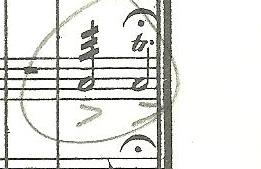
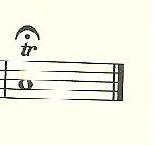
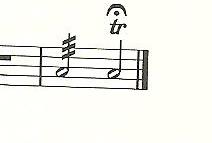
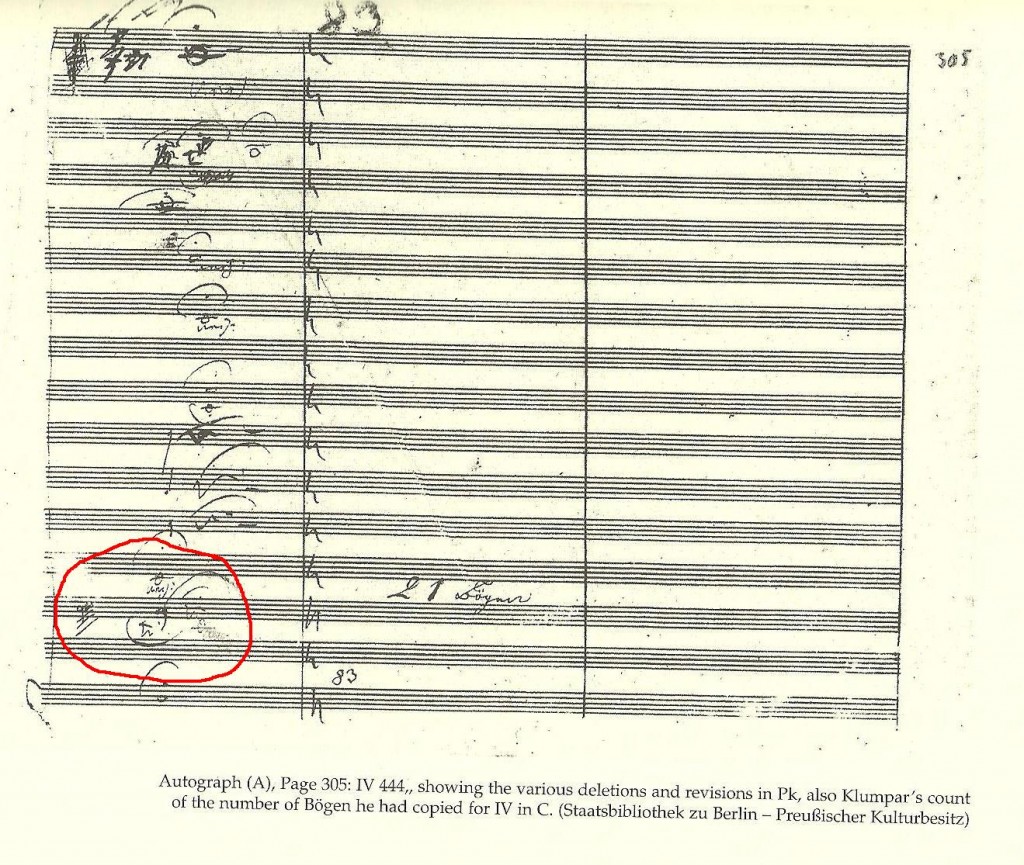
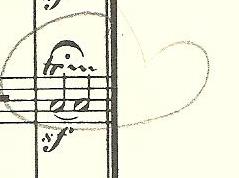
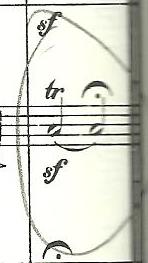
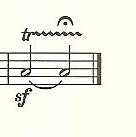
“There is still much we don’t know…”
Isn’t that a great premise for approaching the performance of any work of music, even the most familiar? Experiment in performance practice, especially when undertaken from the humble perspective of acknowledging what we don’t know rather than beginning from our more arrogant assumptions and certitudes is one of the most exciting elements of a lively musical life.
Great post, Kenneth!
Exactly, Daniel- What a Critical score ought to do is get us asking more questions, showing us where the mysteries and problems are and helping us understand the known knowns, then known unknowns and the unknown unknowns (thanks Mr Rumsfeld). Far better that than trying to establish an official solution to an question that should remain open to consideration. All the editions discussed here contribute a lot to the questioning process, but editors being only human, at some point they feel they have to take the opportunity to put in their own two cents.
Thanks much for the comment
Fascinating post! Not that one can argue about each and every note of a symphony, but even if we have only one per page, how much discussion could there be — would we then have time to perform the work? :)
As I understand you, the conductor *might* look up a controversial note if he thinks that the editor might have put his own weight in the decision, so while reading what the solution was with Bach’s Cello Suites, I wondered what a tremendous amount of work it would be for conductors to look over all the possible sources for such problematic notes in larger symphonic works!
(I just remind the reading audience of whole posts from Ken about the first 16 bars of a Haydn symphony or an even longer post about a symphony movement (Sibelius’ Fifth 1. mov. it was, I think) and let’s not forget the Dvorak 8 post but better ignore the stream of Mahler and Shostakovich or we might get dizzy!).
And then people say conductors are there for hand-waving in front an orchestra!
On a related note: At the end of the first movement of Rachmaninoff’s 2nd Symphony there’s a timpani note played at the very end sometimes. Since you performed the work last year did you found an explanation about such practice since I couldn’t find it in the score of the local library (which is the same as the online one at IMSLP)? Is that also a case of editor’s decision?
Hi Zoltan-
Thanks so much for your comment and the kind words, which are much appreciated. You make a very good point- it is an awful lot of work, but that’s why conducting (current trends aside) is not a young person’s game. The kind of depth of knowledge that a Harnoncourt, Fischer or Haitink have accrued in their careers is not something a young conductor can hope to match or feign. There are not enough hours in the day, but we have to remember what the goal really is- to do justice to works by people like Beethoven and Schumann. Until we’ve reached that depth of understanding, the best we can hope for is to fail with style.
As to the timp note- it’s a tradition with no basis in Rachmaninoff’s scores. Not all such re-touchings are sinful. My favorite moment in all Dvorak is the very end of the 7th Sym when the horns leap up an octave and descend in the last few bars. Problem- Dvorak didn’t write it for horns, but for woodwinds. Pace Tony D- the horns sound better, though I may burn in hall. The Rach timp note is a closer call for me. When I last did the piece, I had a monster timpanist and a smallish bass section, so I used the timp, and it sounded rather great.
John Boyden, legendary producer and director of New Queen’s Hall Orchestra (and formerly the LSO) was there and his email is worth quoting-
“The extra timpani thwack at the end of the first movement is fine by me. I’ve made three recordings of that work, but only Rhozdestvensky put it in. I thought there was another one on Saturday later on, but on Monday morning I can’t remember where it was. Of course, it may be that the player simply gave it a bit more than usual. Some of the players were terrific. The skinny first trumpeter is a bit of a star, although sometimes coming through a bit strong for my sad taste.”
I really had to quote that because it is one of the greatest producers of all time mentioning me and Rhozdestvensky in the same paragraph on a Russian work. Serious point- some do it, some don’t. It’s just a bit of fun- if I don’t do it next time, it probably means I’m getting less fun as I get older.
K
Great article! The term “ur-text” sounds so “biblical” that when I first heard of these things I assumed somehow that they were unassailable texts direct from the composer’s quill. Then I learned about how many corrections were made during the process from Beethoven’s autograph to corrected engraver’s edition, to first edition, to corrected foreign editions, etc…all by Beethoven’s own hand! So when I read that a conductor has gone to the original source for his interpretation, I sometimes wonder WHICH original source :).
What you wrote above also reminds of me of that great Omnibus episode of Leonard Bernstein explaining what a conductor does. Besides knowing the score inside out, says Lenny, the conductor needs to study the context and life background of the composer. I assume this (additional) extra-textual stance enables the conductor to make the choices discussed above.
Anyways, very enjoyable reading!
So what do you think about B’s metronome readings? Is that a topic you’ve covered here already?
Ah I see you wrote about B’s tempos in March – I should have checked first by clicking where it says BEETHOVEN perhaps….?
Hi Ed
Thanks for the comments. Glad you found the March piece on the metronome markings. The important thing is not the exact tempi, a few of which are nearly impossible and a couple of which are wrong. They still tell us so much about relationships between sections and mvts, about units of pulse, about breathing and about phrasing.
I look forward to checking out your site
Best
KW
I am Paul Yancich, that timpanist and still timpanist of The Cleveland Orchestra.
I had been taught to play the last measure of Beethoven 5th as one continuous roll and had done so until Mr. Dohnanyi asked me to ” Do something with the last measure.” Once he released me from the “tradition” I tried several versions and then came up with what you hear and see on the video. For those interested,the key is to maintain the half note tempo of the previous measures- two very quick roll attacks.
You will also notice that Mr Dohnanyi indicates a final struck note which is not in the part or score, which you can clearly hear. That is something that he picked up from me which I was taught by my teacher Cloyd Duff timpanist of The Cleveland Orchestra 1943-1981, which was taught to him by his teacher Oscar Schwar timpanist of the Philadelphia Orchestra 1904-1946, which was taught to him by his teacher Heinrich Knauer timpanist of the Dresden State Opera which was taught to him by etc… a tradition that has been handed down from generations of timpanists and often misunderstood.
Dear Paul
Many thanks for your fascinating comment. It’s fantastic to have your input- not least because I’m very much a fan of your playing. I’m curious whether you still do some version of the two half-note rolls today- I realize it depends on the conductor. What would be your default or preferred version? It’s very interesting to know some of the history behind the final thwack, too. It’s amazing to think about how far back these things go- humbling, too, for the conductor who would tamper with them….
Thanks again for getting in touch!
Ken
Hi Ken,
Thanks for the kind words. I play the version that is on the edition that we are using at that time. It is usually the whole note version these days. It is frustrating that there is no historical clarity on so many other similar notation questions. You can contact me at my e-mail account if you would like to hear more. PY
Although this blog post is nearly 10 years old as I type this, I’m going to comment anyway. (I comment here as a composer, by the way.)
It seems to me like the timpani notation in the last bar of the Beethoven 5 has to be a mistake. At a tempo of whole=112, the 32nd note slashes are faster than the obvious unmeasured roll of the last half note.
As to Dohnayi’s timpanist, it seems to me—both aurally and visually—that he is accenting not the second half note, but as if he’s accenting the downbeat of an extra bar that’s not in the score, of course. My perception, whether it is correct or not, is that the downbeat of the actual last bar and his subsequent accent are roughly 112 bpm from one another.
I recently saw some even more ambiguous roll notation in one of Beethoven’s timpani parts, but I cannot find it now. I am not certain, but I think it was from one of his symphonies. 32nd slash notation mixed with tr roll notation. If I find it I’ll post here again. If you happen to know, I’d appreciate knowing myself.